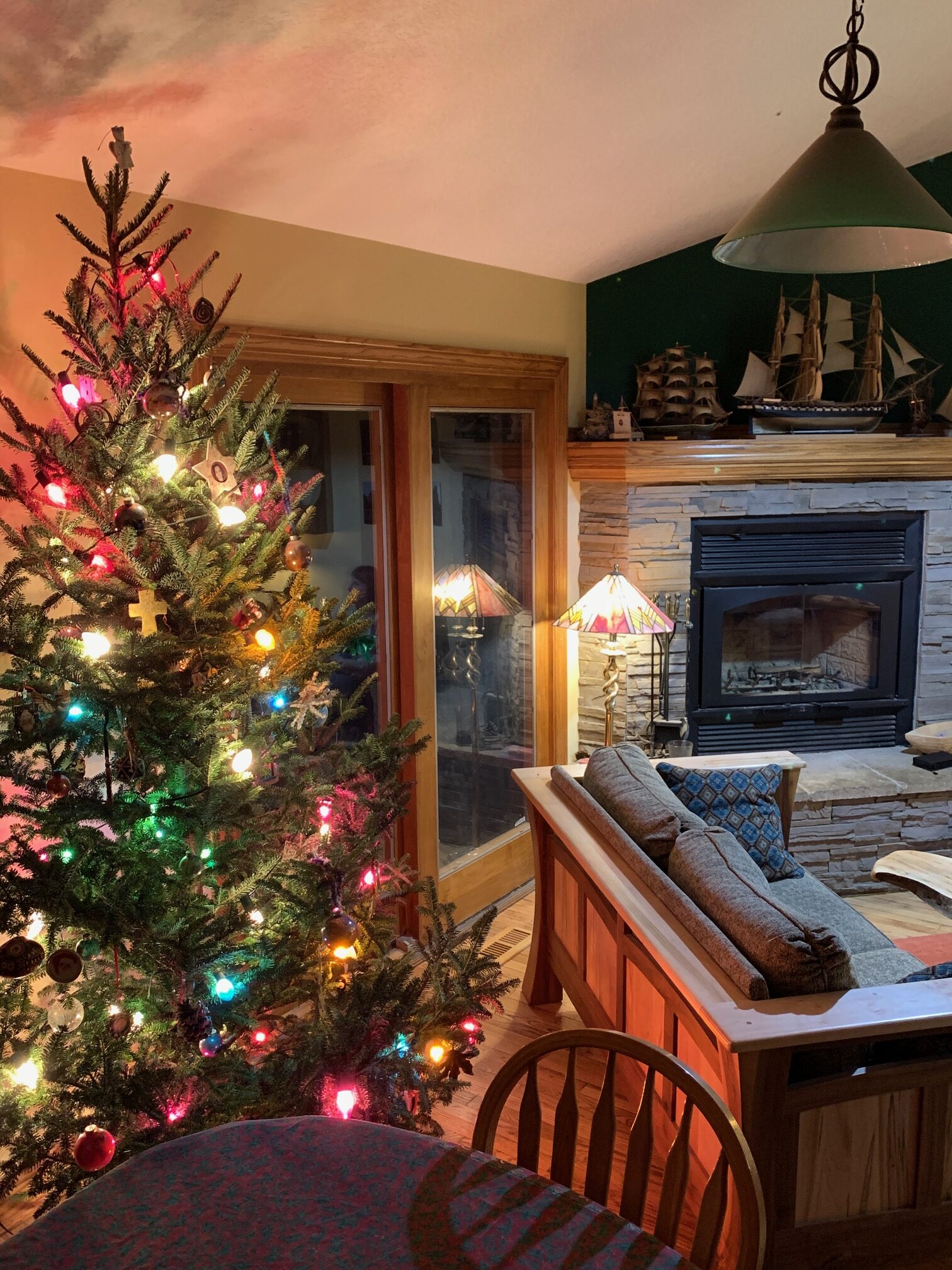Author’s note: I’m taking an unusual step to anchor today’s post in a moment. A reader has offered a comment, which I heartily endorse. Here it is:
“Jimmy was probably the only kind and good hearted politician in history… Have a good 2025. It will likely be an interesting year.”
One year when I was a little girl, my dad went out in the timber on our Iowa farm and cut down a tree. He wrestled it into the house and declared it to be our Christmas tree. My memory is that the tree was huge, although I was very small at the time. What we all remember about that tree, though, was how bad it smelled. Too strong for our sensitive noses. We decorated it with tinsel and shiny balls and strings of popcorn anyway. The best was the lights. I loved those big, bright, colorful bulbs. The shining reds and yellows, greens and blues mesmerized me. I could have stared at them forever.
Today, a smaller, more fashionable and civilized tree stands in a place of honor in the living room on Owl Acres. Its branches support strings of those large colorful lights. I can’t see the lights anymore, but I insist on having the big ones of many colors anyway. This tree also smells of Christmas, but more subdued than that wild tree of yesterday.
I don’t know what species of tree Dad harvested that year—perhaps a cedar. The species we have today is a Fraser fir (Abies fraseri (Pursh.)) It’s related to balsam fir. Its short, flat needles are soft to the touch, and they completely cover the tree. The branches grow straight out from the trunk, sending new shoots out at various angles. The ends of the branches remind me of five-fingered hands.
The Fraser fir has become popular as a Christmas tree because it has strong branches, a pleasant aroma, and perhaps most important, it holds its needles longer than other contenders.
Our Fraser fir started life in a Styrofoam cup. It may have been grown from seed, but more likely it grew from a cutting. Either way, it took three years to become a little 12-inch-tall tree that could be bought and planted on a Christmas tree farm. Each of the subsequent years, the tree grew another nine to twelve inches. In its sixth year, the growers began to shape it by pruning its branches. This shaping went on until the tree was about ten years old and around seven feet tall. That’s when we found it outside the garden center.
Fraser firs aren’t only for Christmas. Their natural habitat is in high elevations in the southern Appalachian Mountains. They are native to the area where Tennessee, North Carolina and Virginia come together. The tree was named in honor of a Scottish botanist named John Fraser, who explored the Appalachian Mountains in the 1700s.
Fraser fir trees can be found growing as low as 4,000 feet of elevation, but they thrive best in the clouds, at around 6,600 feet. Being constantly bathed in moisture, the trees absorb water both from the air and from the abundant rainfall. They grow root systems that are wide and shallow, allowing the trees to stand securely on mountain slopes with very little top soil. At its highest elevations, forests of Fraser firs may be found sharing the canopy with red spruce. Mature trees grow to about 85 feet tall and live for around 150 years. They first get established where the seed falls. Then they wait patiently, year after year, growing slowly, until a space in the canopy opens up. When sunlight reaches the forest floor, the lucky ones start growing faster to take their place in the canopy.
Logging these mountaintop forests was a major industry in the area at the turn of the last century. Although the wood of the Fraser fir wasn’t very good for anything, the spruce was, so clear-cut logging stripped the mountains of their forest crowns. Fires soon followed in another wave of devastation. Some were set by the logging companies to clean up the ground, and some were started by sparks from locomotive engines. The fires were so hot that they devastated what was left, burning not only the trees and brush but also the soil itself to a depth of 12 inches. This destroyed the seeds in the soil, making natural regeneration nearly impossible. Some of these mountains have since been replanted by humans and incorporated into state and national parks.
Our Christmas tree never stood high on a mountain top. As a product of renewable agriculture, it was planned, started, planted, tended, shaped, sold and replaced by another seedling somewhere in the lowlands. For a few weeks, it will stand sedately in the living room on Owl Acres.
I love the softness of the needles, the hodgepodge of ornaments I’ve gathered over the years, and the bright lights that I can almost see. They all remind me how blessed I am.
Photo by Author. Alt text: Fraser Fir that drew the honor (misfortune?) of being our Christmas Tree this year, in its place in the living room. Tall and cone-shaped, it’s hung with baubles accumulated over years. The antique, incandescent lights connect today into the flow of yesterdays and tomorrows.

1 comment
Love your tree, Karen! I also prefer Fraser firs, but did not know their story, so thank you! (And about Jimmy Carter, thank you for including that post. He was indeed a good, decent human being. Rest in peace, good and faithful servant.)